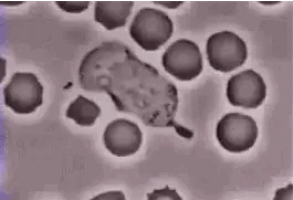
Bacterial vaginosis — BV, for short — is an umbrella term for a bacterial imbalance in the vaginal microbiome, known as “dysbiosis.” The vaginal microbiome is home to millions of different bacteria (some “good,” some “bad”), fungi, viruses, and other pathogens. Usually, a healthy vaginal microbiome keeps this balance in check, mainly thanks to the presence of protective species like Lactobacillus. These species produce lactic acid and keep the vaginal pH acidic to stop “bad” bacteria from overgrowing. Sometimes, though, factors like sex, medications, smoking, stress, or douching, can cause a temporary shift in the microbiome that allows disruptive bacteria to overgrow and cause symptoms, which can include:
- Unusual vaginal discharge that is thin, gray, or watery
- Strong or fishy odor
- Vaginal discomfort, itching, or irritation
Together with Evvy Senior Scientist Dr. Krystal Thomas-White, we’re diving into the causes of BV, how it differs from a yeast infection, the connection between BV and menopause, and more. Evvy is the first and only vaginal healthcare company offering advanced at-home vaginal microbiome testing, prescription treatment, and 1:1 coaching.
What causes BV?
That’s the million-dollar question! Researchers are still trying to figure out the exact cause of BV, but they’ve identified a few risk factors, including:
- Sexual intercourse (especially unprotected sex, having multiple sexual partners, or having a new sexual partner)
- Using douches
- Smoking
- Chronic stress
- Hormonal fluctuations
The bacteria most often responsible for BV are Gardnerella vaginalis, Prevotella, Atopobium vaginae, Mobiluncus, Mycoplasma, Ureaplasma, and many, many more.
How is BV different from yeast infection?
Unlike BV, yeast infections aren’t caused by the overgrowth of bacteria, but rather by a fungus (typically Candida). The symptoms are also different. While both conditions can cause unusual vaginal secretions and discomfort, yeast infections are associated with a thick, white (and odorless) discharge that looks like cottage cheese, along with intense vaginal itching, and a burning sensation during urination.
What is the connection between menopause and bacterial vaginosis?
One word: estrogen. Estrogen is super important for vaginal health. It keeps the vaginal mucosa thick, elastic, and lubricated. It also promotes the production of a sugar called glycogen, which acts as a food source for good bacteria like Lactobacillus spp. As we know (because we talk about it all the time) during menopause, our bodies slow down the production of estrogen, along with other reproductive hormones such as progesterone. In addition to contributing to a whole host of other menopause symptoms, these hormonal changes mean there’s less glycogen to feed the Lactobacillus, leaving an opportunity for BV-causing bacteria to overgrow. A thinner vaginal lining can also make it more susceptible to harmful bacteria.
This loss of protective microbiota is also why prevalence of urinary tract infections (UTIs) increases during menopause. A healthy vaginal environment helps protect not only from vaginal pathogens, but the bladder pathogens as well.
How can I prevent recurring BV?
- Avoid smoking (or quit if you’re already a smoker)
- Use barrier methods like condoms and dental dams when you have sex
- Take a probiotic with strains of “good” vaginal bacteria regularly
- Don’t use vaginal douches (or harsh feminine hygiene products such as soaps, sprays, or deodorants)…
Wait, no washing my vulva?
The vagina is a self-cleaning organ (vaginal discharge is literally proof of that) and doesn’t need our help in that department. In fact, many of the harsh feminine hygiene products such as soaps, sprays, and deodorants that promise to clean and perfume the genitals are actually really ineffective and sometimes harmful. Aside from not cleaning the vagina, douching can disrupt the natural balance in the vaginal microbiome and flush out protective bacteria, altering the pH and giving “bad” bacteria a chance to take over. And, douching has also been linked to an increased risk of getting STIs and PID.
Prevention and treatment options
Does BV go away on its own, or require medical treatment?
In rare cases, mild BV might go away on its own but it’s honestly not worth the risk. For the most part, BV is a mild nuisance and can be treated with antibiotics like metronidazole and clindamycin. However, untreated BV can lead to long-term health complications — including a higher risk of contracting sexually transmitted infections (STIs), pelvic inflammatory disease (PID), fertility problems, and pregnancy complications (including miscarriage and preterm birth).
Can hormone therapy help with BV or BV-related odor?
During menopause, estrogen levels naturally decline, which can cause a decrease in protective bacteria, increasing the risk of bacterial infections like BV. Menopausal hormone therapy, or MHT (previously referred to as hormone replacement therapy or HRT) simply replenishes your body’s supply of estrogen during menopause. It can be done either systemically (through pills or patches) or localized (like topical vaginal creams or rings). Some studies have shown that vaginal estrogen (localized) is more effective for treating vaginal symptoms in menopause. Research shows that using vaginal estrogen is proven to be highly successful in reducing vaginal symptoms related to menopause and increasing Lactobacillus levels in the vagina. Not all women will experience the same effects, though. Vaginal estrogen isn’t a universal solution for everyone. Using MHT for vaginal health should be discussed with a healthcare provider, especially considering the risks and benefits for each individual.
When should someone consider seeing a healthcare provider?
Really and truly, you should see your healthcare provider whenever you notice persistent symptoms. Vaginal discharge can fluctuate throughout the menstrual cycle, and hormones can be all over the place in perimenopause, so it’s quite normal for the quantity, consistency, or color of our discharge to change slightly. But if you notice a really strong odor (especially a “fishy” one), or any sort of discomfort, itching, or burning, it’s best to see a provider. Especially since BV symptoms often overlap with those of other vaginal infections, including some STIs. If you’re approaching menopause, you can also monitor your vaginal microbiome by taking an Evvy Vaginal Health Test, and see how perimenopause is affecting the bacterial balance in your vagina.
READ MORE FROM ELEKTRA:
READ MORE FROM OUR FRIENDS AT EVVY:
- Menopause and UTIs: What’s the Link?
- What Is BV? Understanding Bacterial Vaginosis
- How to Tell Whether Your Vaginal Infection Is Due to Hormones
About Dr. Krystal Thomas-White
Dr. Thomas-White is a microbiologist specializing in the female urogenital microbiome and how it relates to health and disease. Her research explores how alterations in both the bladder and vaginal microbiomes are associated with common disorders (like UTIs, bacterial vaginosis, and incontinence) and how the microbiome changes in response to hormones throughout life, particularly during pregnancy and menopause.




